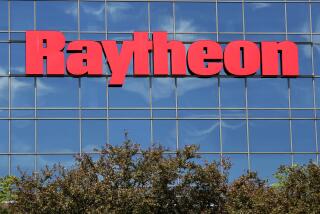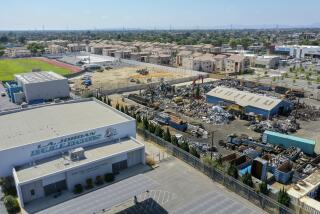Probe Continues in Rockwell Blast Despite Plea
SIMI VALLEY — The day after Rockwell International agreed to plead guilty to illegal hazardous waste storage and disposal in the explosion deaths of two scientists, federal investigators continued their probe Tuesday and Ventura County prosecutors also considered pursuing charges against company employees.
The U.S. attorney’s office announced a plea bargain Monday in Los Angeles in the 21-month-old investigation, granting Rockwell’s Rocketdyne division immunity from further criminal charges.
In exchange, Rocketdyne agreed to plead guilty Thursday in U.S. District Court to three felony counts, pay a $6.5-million fine and give the FBI its internal investigation reports on the blast that killed Otto K. Heiney and Larry A. Pugh in July 1994.
But the pact will not shield current and former Rockwell employees from being prosecuted individually on federal criminal charges.
Nor would it protect Rockwell and Rocketdyne from civil charges if the firms are found to be lying about the explosion or the investigation, said Assistant U.S. Atty. William Carter.
The guilty plea also would not stop Ventura County from investigating Rockwell employees in Pugh and Heiney’s deaths, said Greg Brose, head of the Ventura County district attorney’s environmental unit.
Brose said that once the federal case is closed, his office will decide whether to pursue its own investigation against Rockwell workers for violations of state environmental and worker safety laws.
He added, “I think we just wanted to keep all the options available.”
A Cal/OSHA investigation of the blast brought $202,500 in fines against Rocketdyne, which the firm has appealed.
But when Cal/OSHA brought the case to Ventura County prosecutors, they passed it to the U.S. attorney’s office because federal jurisdiction was more appropriate at the time, Brose said.
Meanwhile, FBI agents and U.S. prosecutors plan to scrutinize three Rockwell reports on the explosion to determine whether to charge individual company employees for ordering the illegal burning of explosive chemicals that killed the two men.
Rocketdyne spokesman Paul Sewell declined to comment Tuesday on the contents of the reports, except to say that one was written by Rocketdyne, one by Rockwell and one by an independent panel of experts whom he refused to identify.
U.S. authorities also plan to look into how UXB, Rocketdyne’s cleanup contractor, handled the cleanup and removal of hundreds of pounds of explosive chemicals from the outdoor Santa Susana Field Lab in southeastern Ventura County after the accident.
Heiney, 53, and Pugh, 51, worked for Rocketdyne’s Chemical Technology Department, which researched gun propellants and flares designed to decoy heat-seeking missiles away from military targets.
On July 21 and July 26, 1994, Rocketdyne admits, the two physicists were disposing of triaminoguanidine nitrate--or TAGN--a highly volatile chemical.
Heiney, Pugh and three other Rocketdyne employees had already burned off two batches. They had spread some of the chemical in a metal tray atop layers of sawdust, nitrocellulose and glycidal azide polymer and a device called an “electric match,” then retreated to a blockhouse to ignite it.
One of the five employees apparently returned to the still-hot test pans with a container of explosives, which blew up, instantly killing Pugh and Heiney.
The day after the blast, Rocketdyne President Paul Smith told reporters that the men were conducting legitimate tests, using sonic probes to measure “overpressure” waves from the blasts and determine how the nitrocellulose and glycidal azide polymer should be handled.
But on Monday, Smith admitted that a Cal/OSHA investigation had found the truth: that the men were illegally burning 160 pounds of propellant, a little bit at a time, to dispose of it.
Rockwell had no disposal permit, and had already been illegally storing the chemicals without a permit for 55 days.
More to Read
Sign up for Essential California
The most important California stories and recommendations in your inbox every morning.
You may occasionally receive promotional content from the Los Angeles Times.










